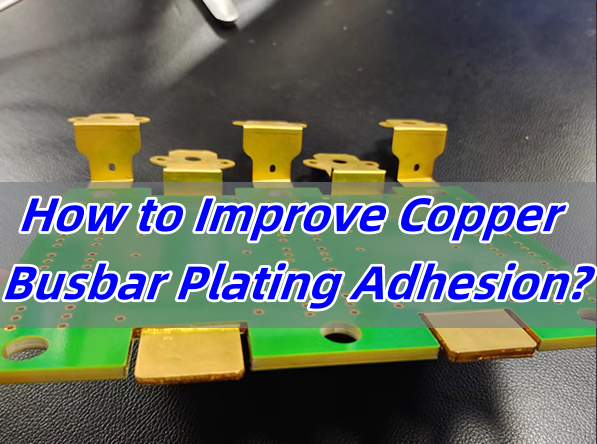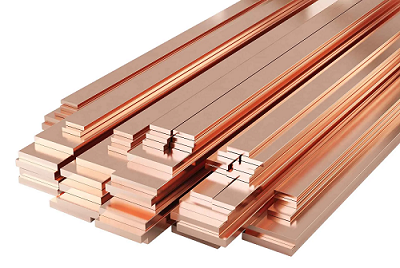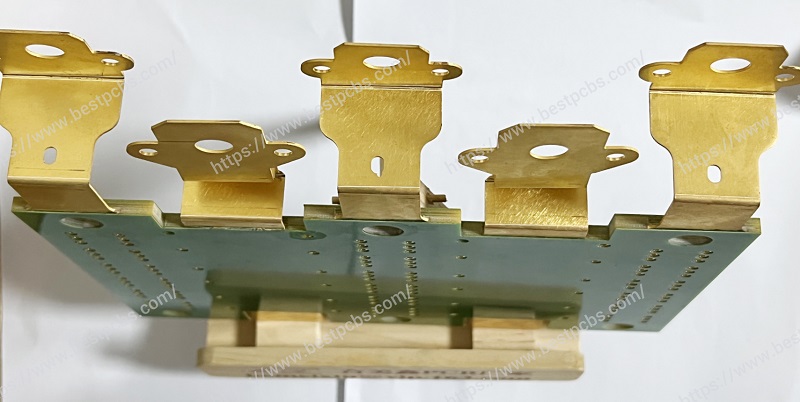Copper busbar plating is especially important for building a safe and durable electrical system. This blog is created to discuss the fundamentals of copper busbar plating, compares plating materials and processes, explores costs and applications, and shares ways to improve adhesion for long-term reliability.
Do these worries plague you constantly?
- The lack of bonding of the plating?
- Bad corrosion resistance of the plated layer?
- Complicated plated layer process, high cost?
The problems can be solved with the following feasible solutions.
- Adjust parameters of the plating solution and process.
- Enhance surface pretreatment, for example, clear the copper busbar completely before plating, remove impurities, such as oil, oxides, etc, to improve the bonding strength of the plated layer and substrate.
- Elevate the plated layer selection and the plated layer combination. And monitor the process parameter and ensure the plated layer performance via the microscope, hardness test, adhesion, and other testing methods.
Copper busbar plating is essential for stable power systems. By the way, copper busbar has been increasingly used in PCBs, and the copper busbar PCBs are mainly extensively used for high power, great reliability applications. The point is to improve conductivity, corrosion resistance, and soldering performance. At Best Technology, we help customers solve the headaches of PCB projects that customers face, with advanced plating methods and strict quality control. Best Technology is a quick-turn PCB manufacturer in China. If you would like to inquire about any PCB or PCBA price, just feel free to stay in contact with us by email sales@bestpcbs.com.

What is Copper Busbar Plating?
Copper busbar plating is the process of adding a protective metal layer onto copper bars. The main goals are corrosion protection, solderability, and durability. Tin, nickel, and silver are widely used depending on project needs. This layer also helps in harsh environments, where bare copper would quickly oxidize and lose efficiency.

What Material is Generally Used for Bus Bars?
Most busbars are made from copper because of its excellent conductivity and mechanical strength. Aluminum is also used for lightweight designs, but copper remains the choice for heavy-duty projects. When combined with plating, copper busbars achieve both high electrical performance and surface protection. This is why they are standard in substations, switchgear, and renewable energy projects.
What is the Difference Between a Nickel Plated Copper Busbar and a Tinplated Busbar?
A nickel plated copper busbar is strong against wear, temperature, and chemical exposure. It is widely used in automotive and aerospace fields. A tinplated busbar, on the other hand, is more common in general power distribution systems. It provides good conductivity at a lower cost. While nickel is chosen for endurance, tin balances performance with economy. Both finishes depend on solid adhesion to ensure long-term stability.
What is the Copper Busbar Tinning Process?
The copper busbar tinning process includes cleaning, activation, plating, and inspection. Electroplating gives thin and uniform coating, while hot dipping produces a thicker protective layer. Surface cleaning is vital. Without it, adhesion problems can appear. The plating must also be controlled under proper current and bath conditions. These steps make sure the tin layer bonds tightly with the copper surface.
Why Do Industries Prefer a Tin Plated Copper Bus Bar Over a Bare Copper Bus Bar?
Industries prefer a tin plated copper bus bar because it resists corrosion and extends service life. Bare copper forms oxide films that raise contact resistance. This can lead to heating, power loss, and poor reliability. A plated busbar reduces these risks. In humid or coastal regions, plating is almost always required. The extra protection saves cost by lowering maintenance and downtime.
How Does a Copper Busbar Plating Kit Help in Small-Scale or Custom Applications?
A copper busbar plating kit provides flexibility for small projects or custom orders. It allows engineers to plate parts without sending them to a factory. Kits often include cleaning tools, plating solution, and a power source. While not suitable for high-volume production, they help with prototypes and urgent repairs. For larger runs, industrial copper busbar tin plating machines are used for precision and consistency.
Why is Copper Busbar Plating Important in Electrical Systems?
Plating plays a key role in reliable power distribution. It prevents performance loss caused by corrosion or oxidation. In switchboards, renewable energy plants, and electric vehicles, copper bar plating ensures stable current flow. Strong adhesion makes this protection last longer. Without plating, systems face higher risks of failure, which can be costly to fix. For industries, plated busbars mean safer and more efficient operations.
How Much Does Copper Busbar Plating Cost for Industrial Projects?
Copper busbar plating cost varies with the coating type, thickness, and volume. Tin plating is the most economical choice. Nickel plating costs more but delivers longer durability. Silver is the premium option for high-frequency or low-resistance needs. The tinned copper busbar price remains attractive compared to the long-term savings. Investing in quality plating avoids higher expenses from frequent replacements or failures.
Why Should Engineers Consider the Copper Tin Plating Process for Long-Term Reliability?
The copper tin plating process provides reliable adhesion and balanced performance. It improves solderability, protects from corrosion, and ensures stable conductivity. Engineers choose tin plating when designing for outdoor or industrial settings. It gives strong resistance at an affordable cost. For many sectors, it is the preferred solution for balancing reliability with budget.
How to Improve Copper Busbar Plating Adhesion?
Improving adhesion requires attention to detail. First, clean and prepare the copper surface to remove oxides and grease. Second, control the plating bath with the right temperature and current. Third, apply post-treatment to seal and protect the surface. Using high-quality materials and equipment reduces the chance of peeling or weak bonding. At Best Technology, we invest in advanced plating lines and strict inspections. This approach helps customers overcome adhesion failures and secures stable, long-lasting busbars.

To sum up, copper busbar plating is more than a surface finish. It protect the PCBs from corrosion, oxidation, and maximizes efficiency. From tin-plated copper bar to a nickel-plated copper busbar, each option offers unique benefits. This blog has discussed copper busbar plating details, such as its meaning, significance, costs, and talk about how to perfect copper busbar plating adhesion as well. If you would like to explore more details about copper busbar plating, pls make contact with us at sales@bestpcbs.com or +86-755-2909-1601.
Tags: Copper Busbar Plating


